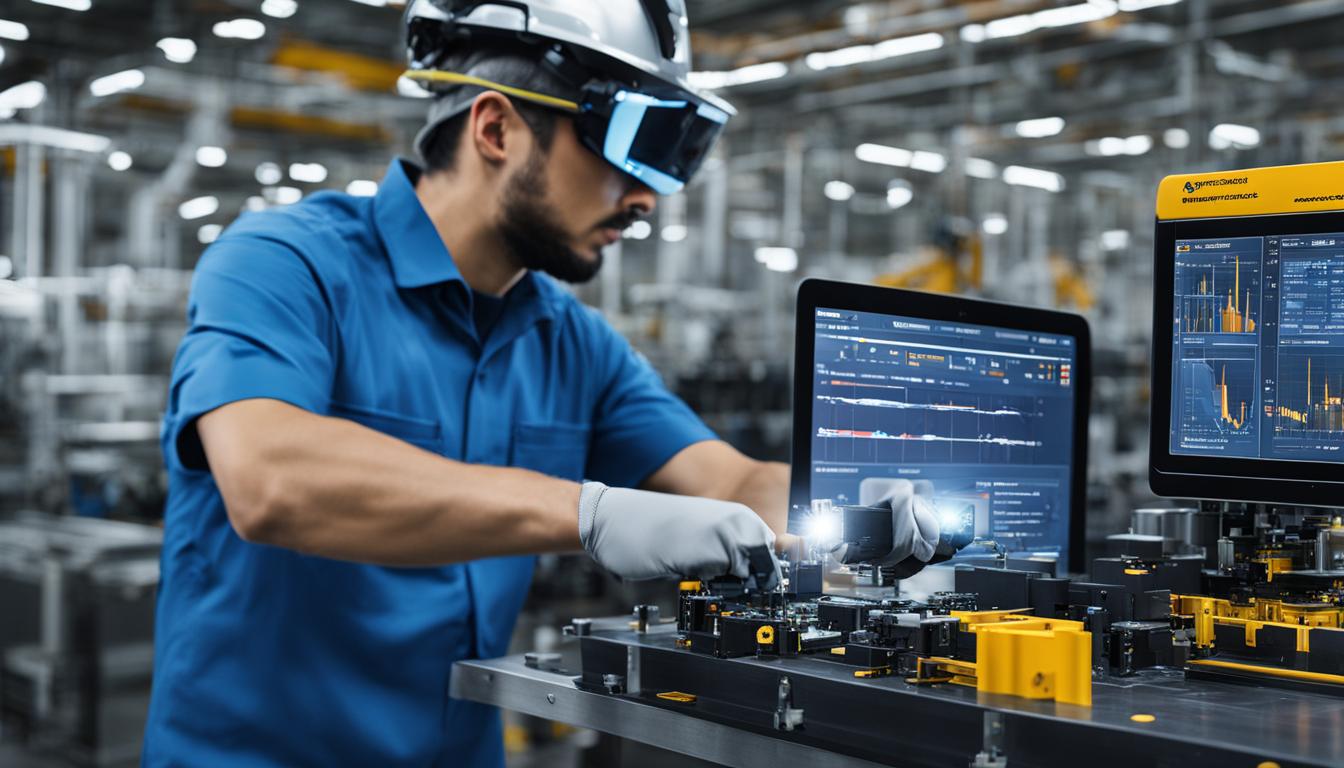We can’t wait to share with you the fascinating story of Mayor Eric Adams’ surprising use of multilingual AI calls to connect with the diverse population of New York City.
These AI-generated robocalls, which use voice cloning technology, have sparked a spirited debate on the ethical implications of such a groundbreaking initiative.
While some applaud the mayor’s efforts to reach different language communities, others raise concerns about the potential misuse of this technology.
Join us as we explore this complex intersection of politics, language, and AI.

Key Takeaways
- Mayor Eric Adams is using voice cloning AI to create robocalls in Mandarin, Urdu, and Yiddish, despite not speaking these languages.
- The public is surprised and concerned about the ethical implications of using AI to clone the mayor’s voice.
- The purpose of the calls is to invite New Yorkers to hiring halls for vacant city jobs.
- Microsoft’s partnership with OpenAI has provided the AI chatbot interface on the Department of Small Business Services website, which includes the proper use of AI technology.
Background of Ai-Generated Multilingual Robocalls
In the background of AI-generated multilingual robocalls, the use of voice cloning AI allows Mayor Adams to communicate with New Yorkers in languages he doesn’t actually know. This AI technology has a significant impact on the ability to reach a diverse population and provide important information in different languages.
However, concerns about transparency arise when these calls don’t disclose that they were created using generative AI. The ethical implications of using AI to clone the mayor’s voice are being questioned. People are surprised to hear Mayor Adams speaking languages he doesn’t actually speak, prompting discussions about the right and wrong of this practice.
While the mayor prioritizes effective communication and addressing job vacancies, the broader ethical implications of using AI in this manner are still being debated.
Public Response and Concerns About the AI Calls
People are expressing surprise and raising concerns about the AI-generated multilingual robocalls from Mayor Adams, questioning the ethical implications of using AI to clone his voice. The public response and concerns regarding these AI calls include:

- Ethics of AI voice cloning:
- People question whether it’s right or wrong to use AI to create audio public service announcements in different languages.
- The broader ethical implications of using AI in this way are still being debated.
- Some worry that this technology could be misused or abused in the future.
- Impact on job placement efforts:
- The robocalls are part of the mayor’s efforts to address the high number of job vacancies in the city.
- It remains to be seen how effective these AI messages will be in encouraging job seekers to attend hiring halls.
- The calls aren’t connected to political ads or campaigns, focusing solely on job placement.
These concerns highlight the need for a thoughtful and transparent approach to using AI technology, ensuring that it’s employed in a responsible and ethical manner.
Purpose and Goals of the Multilingual AI Calls
Continuing our discussion on the AI-generated multilingual robocalls from Mayor Adams, the purpose and goals of these calls include addressing the high number of job vacancies in the city and inviting New Yorkers to hiring halls for potential employment opportunities. The impact on job placement is significant, as these calls directly inform residents about job openings and guide them towards hiring halls where they can apply. The effectiveness of AI communication is evident in its ability to reach a diverse audience in their preferred language, increasing the chances of understanding and engagement. By utilizing AI technology, Mayor Adams aims to tackle the job vacancy issue efficiently and inclusively. The table below summarizes the purpose and goals of the multilingual AI calls:
| Purpose and Goals of the Multilingual AI Calls |
|---|
| Address high number of job vacancies |
| Invite New Yorkers to hiring halls |
| Inform residents about employment opportunities |
| Increase job placement impact |
| Enhance effectiveness of AI communication |
Mayor Adams’ Embrace of Technology and AI
As part of our ongoing exploration, let’s delve into Mayor Adams’ enthusiastic adoption of technology and AI. Here are some key points to consider:
- Mayor Adams has embraced technology as part of his mayoral initiatives, including the use of AI in various areas. He’s taken steps to legalize commercial drone flights and has expanded the use of four-legged robots called digidogs in the city.
- The mayor announced the AI calls in different languages during the city’s Artificial Intelligence Action Plan announcement. Additionally, the city is launching an AI chatbot on the Department of Small Business Services website.
- However, the ethical implications of using AI, such as voice cloning, are being debated. The mayor acknowledges the importance of using AI responsibly, mentioning the proper use of AI tools for sending out calls in different languages.
- It’s crucial to continue discussions around the ethical use of AI technology, ensuring that it’s used to benefit society while safeguarding individual freedoms.
Microsoft’s Involvement in the AI Calls
Moving forward with our exploration, let’s delve into how Microsoft is involved in the AI calls.

Microsoft, in partnership with OpenAI, has created an AI tool called VALL-E X, which is used for generating audio in different languages. This tool is utilized to create the multilingual calls made by Mayor Adams. It allows for the mayor’s voice to speak languages that he doesn’t actually know, such as Mandarin, Urdu, and Yiddish.
While Microsoft’s involvement showcases the capabilities of AI technology, there are concerns about the potential misuse of this tool. The fear of abuse shouldn’t hinder the appropriate use of AI technology, but it’s important to continue discussing the wider ethical implications of its use.
Microsoft’s contribution highlights the advancements in AI, while also raising questions about responsible and ethical implementation.
Proper Use of AI Technology and Concerns of Abuse
We must address the proper use of AI technology and the concerns of potential abuse in relation to the multilingual AI calls made by Mayor Adams. The use of AI technology to generate robocalls in different languages raises ethical implications and concerns about AI technology abuse.

Here are some important points to consider:
- Ethical implications:
- The calls don’t disclose that they were created with generative AI, raising questions about transparency and consent.
- People are surprised to hear Mayor Adams speaking languages he doesn’t actually know, which can lead to misrepresentation and deception.
- AI technology abuse:
- The use of AI voice cloning raises concerns about the potential for misuse and manipulation.
- The wider ethical implications of using AI in this way are still being debated, as the technology continues to evolve.
- Proper use of AI technology:
- It’s important to establish guidelines and regulations to ensure responsible and ethical use of AI technology.
- Transparency and disclosure should be prioritized to maintain trust and prevent abuse.
Addressing these concerns and ensuring the proper use of AI technology is essential for maintaining freedom, privacy, and ethical standards in our society.
Mayor Adams’ Other Technology Initiatives
What other technology initiatives has Mayor Adams pursued?
Mayor Adams has embraced technology as part of his mayoral initiatives. He’s taken steps to legalize commercial drone flights and expanded the use of four-legged robots called digidogs in the city.

In addition to the AI calls in different languages, Mayor Adams has also announced the launch of an AI chatbot on the Department of Small Business Services website.
These technology initiatives aim to address various challenges and improve efficiency in the city. Furthermore, the AI calls specifically focus on job placements, highlighting the impact of technology in helping fill vacant city jobs.
Broader Discussions on the Ethical Implications of AI Usage
One notable aspect of the AI-generated robocalls made by Mayor Adams is the ongoing debate surrounding the ethical implications of using AI technology. This raises important ethical considerations and sparks broader discussions on the use of AI in linguistic diversity.
Here are three key points to consider:

- Privacy and Consent: There are concerns about the use of AI to clone the mayor’s voice without explicit disclosure. The use of generative AI without proper consent raises questions about privacy and the potential for misuse.
- Cultural Appropriation: Some argue that using AI to speak languages the mayor doesn’t actually know may be seen as cultural appropriation. This highlights the need for sensitivity and respect when leveraging AI for linguistic diversity.
- Accountability and Transparency: The use of AI in public communication raises questions about accountability and transparency. It’s crucial to have clear guidelines and regulations in place to ensure responsible AI usage and to address any potential misuse.
As the debate continues, it’s important to consider the ethical implications of using AI technology to ensure that linguistic diversity is celebrated while respecting privacy, consent, cultural sensitivity, and transparency.
Frequently Asked Questions
How Are the Ai-Generated Robocalls in Different Languages Created?
AI-generated robocalls in different languages are created using language translation techniques. The calls utilize conversational AI and voice cloning to generate audio public service announcements.
Are the Robocalls Disclosed as Being Created With Generative Ai?
Yes, the robocalls are not disclosed as being created with generative AI. This raises ethical implications and surprises the public. It is important to consider transparency and accountability when using AI technology.
What Is the Purpose of the Multilingual AI Calls?
The purpose of the multilingual AI calls is to promote inclusivity in community outreach and benefit from the use of AI technology for communication. It allows the mayor to reach a wider audience and provide information about job placements in different languages.

How Is Microsoft Involved in the AI Calls?
Microsoft’s involvement in the AI calls includes their partnership with OpenAI, which created the AI chatbot interface. Mayor Adams, known for embracing technology in his initiatives, mentioned the proper use of Microsoft’s AI tool for the multilingual calls.
What Other Technology Initiatives Has Mayor Adams Embraced?
Mayor Adams has embraced various technology initiatives, including smart city projects and digital infrastructure advancements. These initiatives aim to improve the quality of life for residents and enhance the city’s efficiency and connectivity.
Conclusion
In conclusion, Mayor Adams’ use of AI-generated multilingual robocalls has ignited a spirited debate among New Yorkers.
While some applaud his efforts to bridge language barriers and connect with diverse communities, others express concerns about the ethical implications and potential misuse of this technology.

Nevertheless, Mayor Adams remains committed to effectively communicating with the people of New York City, leveraging technology like AI to fulfill his goals.
As we navigate this complex intersection of politics, language, and AI, it’s crucial to carefully consider the proper use and potential abuses of such technology.











